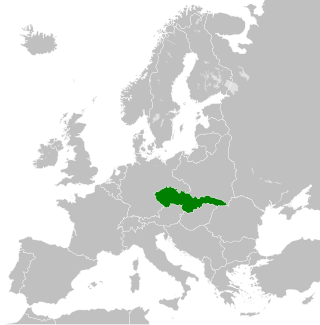This article includes a list of general references, but it lacks sufficient corresponding inline citations. (May 2023) |
| Czechoslovak | |
|---|---|
| českoslovenština | |
| Native to | Czechoslovakia |
| Ethnicity | Czechs, Slovaks |
| Official status | |
Official language in | |
| Language codes | |
| ISO 639-3 | – |
 Czechoslovak Republic as of 1938. | |
The Czechoslovak language (Czech: jazyk československý or českoslovenština, Slovak: Československý jazyk) was a political sociolinguistic concept used in Czechoslovakia in 1920–1938[1] for the definition of the state language of the country which proclaimed its independence as the republic of two nations, i.e. ethnic groups, Czechs and Slovaks.
The Czech and Slovak languages are two closely related mutually intelligible West Slavic languages; they form their own sub-branch, called the Czech-Slovak languages. In practice, in the international discourse and documents, the role of "Czechoslovak" was played by Czech. However, in local speech in public discourse, and media, it was generally a form of Czech as spoken in the capital Prague (i.e. either Standard Czech formally or Common Czech informally) with limited introduction of some Slovak vocabulary. Meanwhile, the Constitution of 1920 and its derivative acts allowed the usage of minority languages provided that they were spoken by not less than 20% of the local population of certain areas.
Officially, the 1920 constitution was superseded on 9 May 1948 by the Ninth-of-May Constitution where the concept of the official language was omitted. The Czech and Slovak languages became de facto official in the parts of the country where they were spoken by the respective ethnic majority, while Czech also preserved the role Czechoslovak had in international affairs.